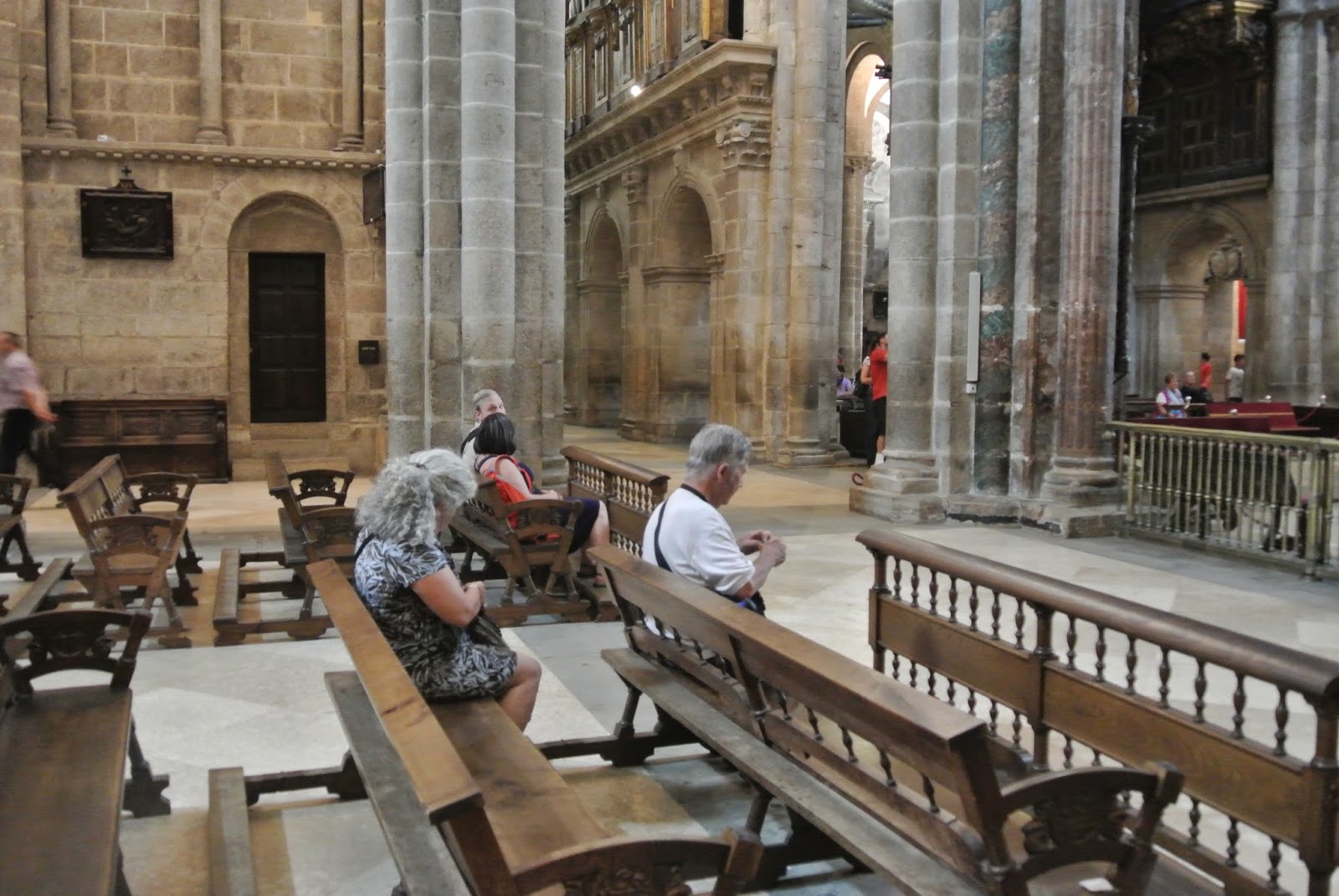If you have seen the film “The Way” with Martin Sheen, you
will have at least a passing familiarity with the city of Santiago Compestela.
Santiago is an ancient pre-Christian city that in the early Middle Ages became
the center for pilgrims walking from the Pyrenees in France some hundreds of
miles to the mythical site of the burial of St. James, the apostle. Sant-tiago
and the same San- Diego come from the same Latin bastardization of Santa
Giacomo or Saint James. Legend has it that St. James was beheaded in Palestine.
His body was loaded on to a stone boat and somehow reached the slightly inland Galician
city of Santiago. Some anonymous hermit in 813 C.E. followed some star to a
field- literally in Latin the “campus stellae”, the field of the star, and
found the long buried body of Saint James. The Catholic Church heavily bought
into the myth. Thousands of pilgrims made it to the destination. Many were
cured, and finally in 1075 C.E., a Romanesque basilica was built.
I shouldn’t say ”finally”. The basilica was built with many succeeding
additions- Renaissance to Baroque architectures combined to form a gorgeous melange-
some call the most beautiful cathedral in Spain. And for many centuries pilgrims
walked “the way” till it was just a trickle in the nineteenth century. Sometime
in the age of disco, it again became a popular thing to walk the walk, then
visit the cathedral. Today thousands and thousands of pilgrims arrive each year
on their own personal journey to find more meaning in their lives. Just today we listened to the priest at mass,
give blessings to pilgrims from many parts of Spain, Europe, the Americas, Africa,
Asia- in short from everywhere. Coming
into town on the bus I saw scores of pilgrims in backpacks, camping gear,
designer walking regalia taking their final peregrination to the center of
town. They lie around the square, talk, smoke, take photos of each other, phone
home, smile broadly, sleep, sunbathe, and collapse. I am not sure how bicyclist
fit into the picture, but there are many in matching designer garb also
photographing each other proudly.
Santiago is located in West of Spain. I am not sure that
west is the proper designation, the country has a slight tilt on the map. It is
the little square of land just above Portugal. Let it be said that this part of
Spain is called Galicia, famous for the Galls (savages who ravaged Europe), the
Gails (a people who migrated from central Anatolia – or Turkey), or the Gales,
a Gallic people, who eventually crossed the sea to settle in parts of Britain
and Ireland. We are getting into dicey
territory here. Being of Irish descent, I have a romantic view of Galician
culture, a proud and vibrant group who peopled this part of Spain, Ireland,
Wales, Brittany and Scotland. Indeed DNA research has confirmed that there is a
real connection between the people of Ireland and this part of Spain. The music
certainly has some common roots (more of that later). Yet in the histories of conquering peoples
over time, many languages die and that is certainly the history of Gallic in
this part of Spain. They do have their own language and it is called Gallego.
It is very close to Portuguese, a very Latin language and much closer to
Spanish than Gallic.
So, why am I here? For many years our family visited Lark in
the Morning Music Camp, held in the Mendocino Woodlands just outside of the town
of Mendocino in Northern California. There we were introduced to many kinds of
music. Among those, my wife took a particular interest in gaita, the Spanish
bagpipe. At the same time she made
friends with some wonderful musicians from this part of Spain who taught at the
camp. After a couple of days on my own,
we have assembled together as a family to enjoy the gifts from this part of
Spain. We are fortunate, through our connections to have a lovely flat near
town. Myself, wife, sister-in-law, father-in-law, son, and son’s girlfriend
have assembled here.






No comments:
Post a Comment